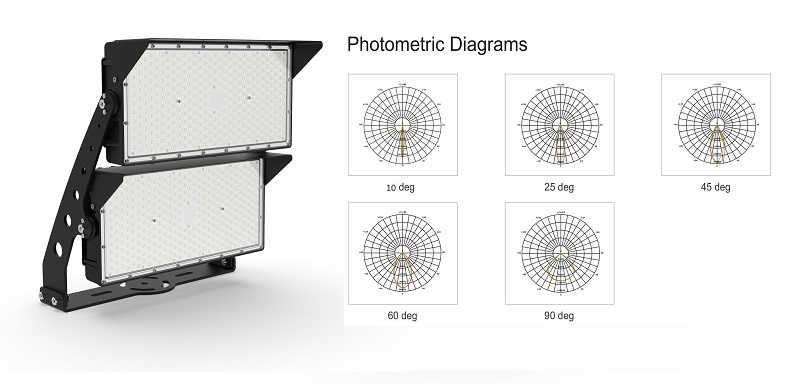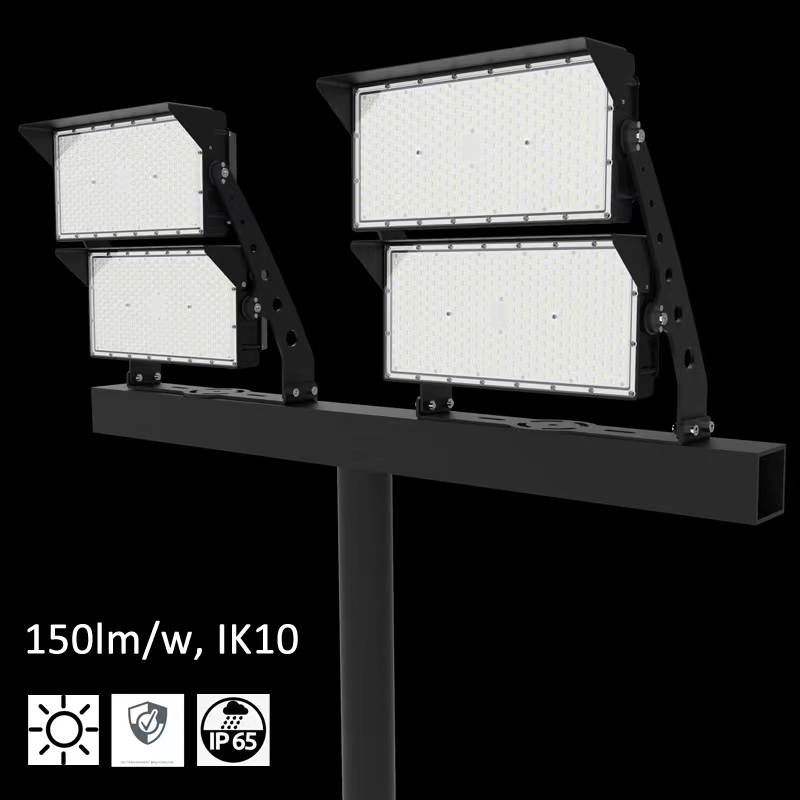Golf at night requires sufficient lighting, so there are high expectations for course lighting. The lighting requirements for golf courses are different than other sports, so the issues that must be addressed are also different. The course is extremely large and has many fairways. There are 18 fairways for a par 72 golf course. The fairways have 18 holes. In addition, the fairways only face one direction. Additionally, the fairway terrain is uneven and changes frequently. This makes it difficult to determine the position of the light poles, the type of light source, and the direction of the light projection. The design of the course is complex and difficult. VKS Lighting will discuss many aspects, including lighting design and selection.
Lighting Design
Golf is an outdoor game that makes the most of space. The ball is flung above the grass by people walking on it. When lighting the golf course, it is important to consider more than just the light from the golfer’s feet and the ball hitting the grass. It is important to keep the stadium’s upper space as bright as possible and to not dim the sphere. Flood lighting is a method of making the lighting soft and meet the visual needs of golfers.
A hole on a golf course is composed of three main parts: the fairway (FA IRWA Y), the tee (TEE) and green (GREEN). The fairway includes bunkers, pool, bridge and steep slope, hills, the rough and ball lane. Because each stadium has a different design style, the layout of these parts can vary. In the “Golf Rules”, bunkers, water hazards, and long grass areas are all considered course obstacles. They can make golfers feel challenged. Night lighting is also important to help them play. Its due role. A good lighting arrangement can increase the challenge and fun of playing golf at night.
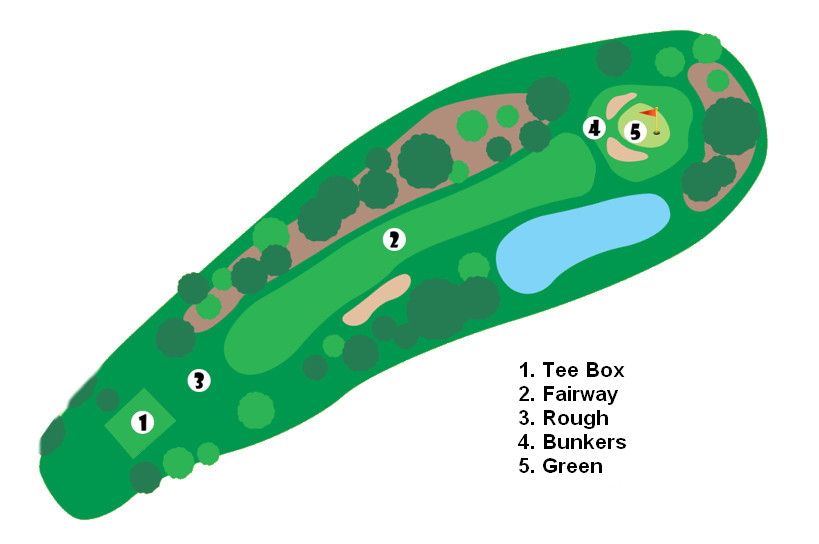
The teeing area is the main area for each hole. Lighting here should be adjusted so that both left-handed and right-handed golfers see the ball and the end of the tee. Horizontal illuminance should be between 100 and 150 lx. The lamps are usually wide-distribution floodlights and can illuminate in two directions to avoid shadows of the ball, club, or golfer hitting the ball.
The light pole should be installed at least 120m from the back edge of the tee box. Multi-directional lighting is required for large teeing table. The height of the lighting fixtures for the teeing tables should not be less than half the length of the table. It should not exceed 9m. According to the installation practice, increasing the height of the fixture will improve the lighting effect on the teeing tables. The effect of a 14m tall pole lighting is better than a 9m mid pole lighting.
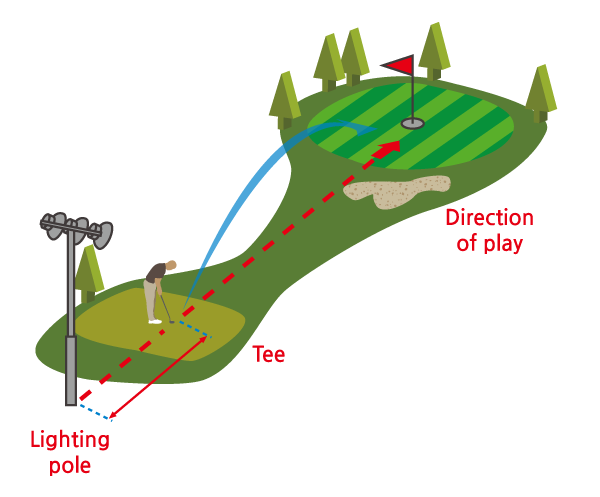
Due to their position, the fairway portion of each hole makes maximum use of the existing landform. The width of each hole varies depending on the difficulty of its design. The typical fairway curves everywhere and is the longest in the landing area. To ensure adequate vertical illumination, narrow floodlights can be used to track lighting from both ends of the fairway. The vertical plane that is relevant refers to an elevation perpendicular the fairway’s centerline. The fairway’s width is its total width at that point. The fairway’s height is measured from the fairway’s centerline to 15 m above the fairway. This vertical plane is located between the two fairway light poles. These vertical planes will have a better effect on the ball if they are chosen in the ball drop area.
The International Illuminance Standard (Z9110 1997 Edition) and technical requirements of THORN require that the horizontal fairway illuminance must reach 80-100lx and the vertical illuminance 100-150lx. Vertical planes should have a ratio of 7:1 between the vertical illuminance and the minimum illumination. It is necessary that the distance between the first vertical surface of the teeing board and the light pole at the table must not be less than 30m. The distance between the light poles and the chosen light fixture must also be kept within the required distance. It is important to consider the light characteristics and terrain in which the light pole is situated. The lamp should be at least 11m from the base of its lamp pole. If the lamp pole is in an area with special terrain, it should be raised or decreased accordingly. Light poles can be placed in high areas or along the ball lane to lessen the impact of terrain.
The other fairway is where you will find obstacles such as small bridges and bunker pools. A certain amount of lighting should be considered. This can range from 30 to 75lx. You can also hit it again easily. The stadium can be made more charming by the proper design of local lighting.
To complete the hole, the player pushes the ball into a hole by pushing it through the fairway. Green is the end of the hole. The terrain is generally more steep than the fairway and has a horizontal illuminance of 200 to 250 lx. Because the ball can be pushed from any direction on the green, it is important that the ratio between the maximum horizontal illumination and the minimum horizontal illumination is not greater than 3:1. So the green area lighting design must include at least two directions to reduce shadows. The light pole is placed in the 40-degree shaded space in front of the green areas. If the distance between lamps is less or equal to three times that of the light pole, the lighting effect will be better.
It is crucial to remember that the lighting pole must not be able to affect the golfer’s ability to hit the ball. Also, the lighting must not create a harmful glare for the golfers on this fairway and other fairways. There are three types of glare: direct glare; reflected glare; glare from extremely high brightness contrasts and glare due to visual discomfort. The light projection direction for a lighted course is set in accordance with the direction of the ball. The effect of glare will be less if there aren’t adjacent fairways. This is due to the combined impact of two fairways. The opposite direction of light projection is the opposite. Players who hit the fairway ball will feel a strong glare from the lights nearby. This glare is a direct glare that is extremely strong against the dark night sky background. Golfers will feel very uncomfortable. The glare from nearby fairways must be minimized when lighting them.
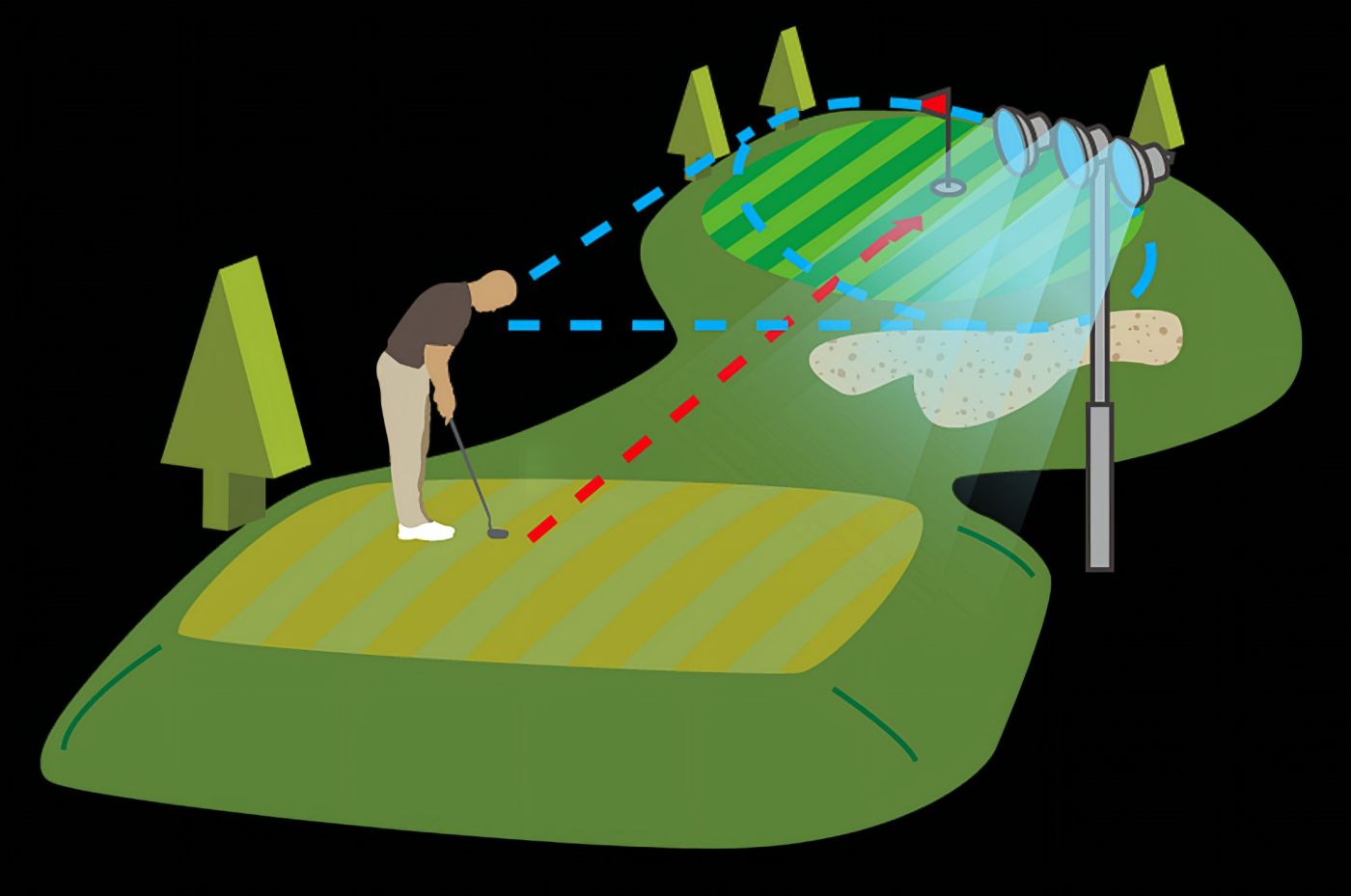
This article mainly discusses the arrangement of stadium light poles as well as how to reduce harmful glare. These points are important to consider when selecting lighting sources and lamps.
1. It is preferred to use high-efficiency light sources. This allows for the same illumination, which reduces the need for additional light sources, and thus lowers the cost of electrical circuit materials and installation costs.
2. A light source that has high color rendering and high temperature is recommended. Field practice indicates that the color rendering index Ra> 90 and the color temperature for gold above 5500K are the most important.
3. Look for a light source that has good control properties.
4. Match the lamp source with lamps. This means that the lamp’s type and structure are compatible with the light source power.
5. Lamps that are in harmony with the surrounding environment should be chosen. The lamps for the light court are placed in an outdoor open space. Therefore, it is important to consider the level of protection against water and electric shock. The protection grade IP66 or the electric shock protection Grade E grade are generally chosen. It is important to consider the local atmosphere and the lamp’s anti-corrosion performance.
6. Lamps should be able to use the light distribution curve. The lamps must have good light distribution and reduce glare to increase light efficiency and power loss.
7. Low operating costs are important when choosing lamps and light sources that are economical. It’s mainly viewed from the angles of lamp utilization factor and lamp and light source lifetime, as well as lamp maintenance factor.
8. Light poles – there are many types of light poles, including fixed, tilting, pneumatic lifting, pneumatic lifting and hydraulic lifting. The stadium environment and economic strength of the investor operator must all be taken into consideration when choosing the right type. This is to ensure that the stadium’s natural beauty and environment are not affected.
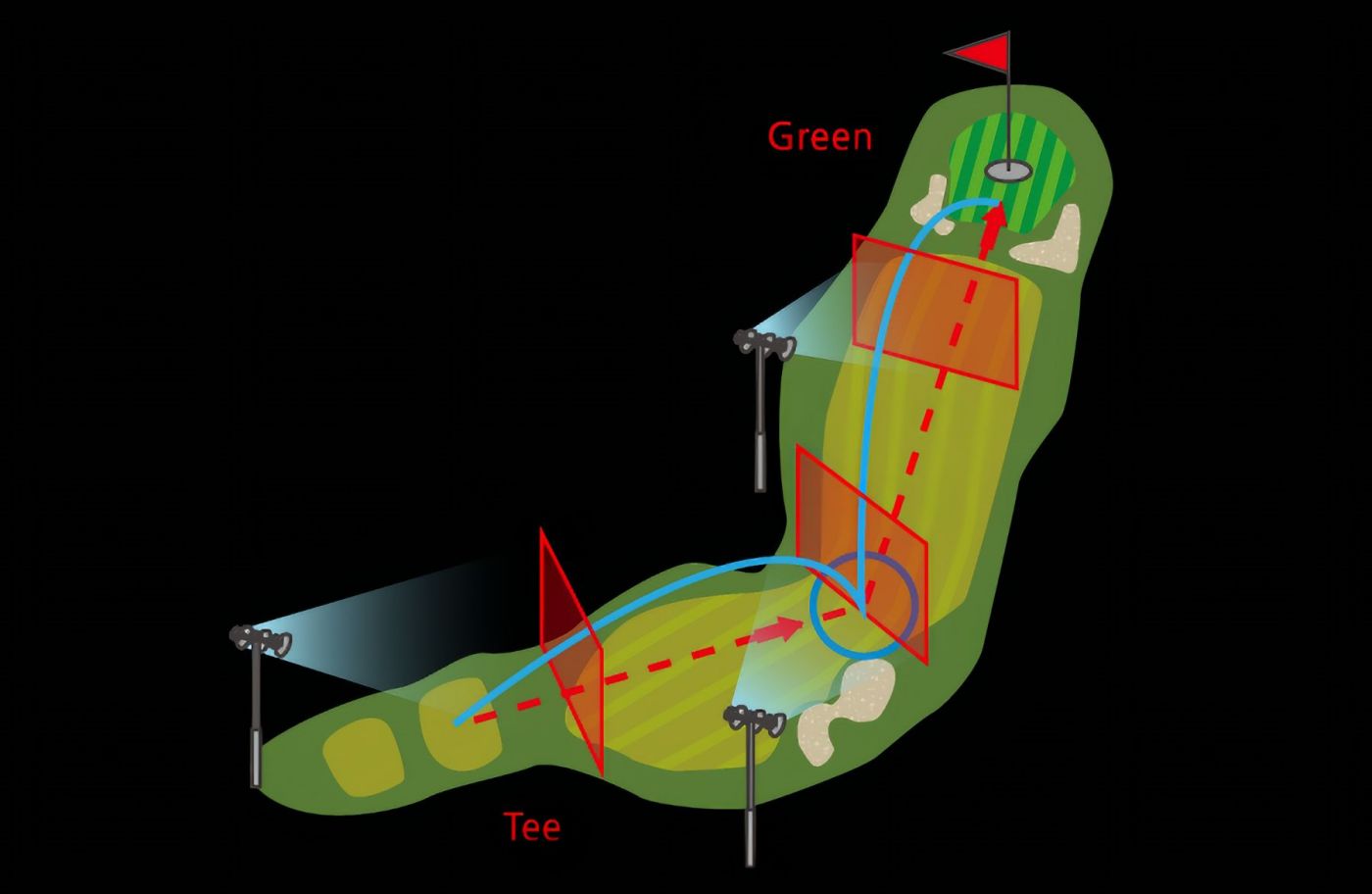
Design Consideration
The best place for the light pole to be placed in the tee box is directly behind it. This will prevent golfers’ shadows from covering the golf balls. Two light poles may be needed for long teeing tables. It is important to keep the light poles at the front of the teeing tables from interfering with those at the back.
The lights in the fairway must be able to see the balls fall on both sides. This will minimize the glare to neighboring fairways. To minimize the number light poles, narrow fairways should be crossed at least twice the length of the light poles. Fairways with a height greater than twice that of the poles will require the light beams to overlap and overlap when the lamps project. To achieve better uniformity, the distance between poles should not exceed three times their height. With a glare control and other accessories, the projection direction of all lamps should be in line with the ball’s direction.
Two opposite directions of light illuminate the green, which reduces shadows for golfers who are putting the ball. The light pole should be placed within 15 to 35 degree of the green’s center line. The first limit of 15 degrees is to reduce glare for golfers. The second limit is to prevent lights interfering with the shot. The distance between poles must not exceed three times their height. Each pole should have no less than two lamps. Additional consideration should be given to the number of lamps as well as the projection angle if there are any bunkers, waterways, fairways, or other obstacles.
When illuminating horizontally, the green and tee, wide-beam lamps are best. However, higher illuminance data is not possible. Fairway lighting requires lamps with wide beam and narrow beams to be combined in order to achieve a better lighting effect. The better the lighting design, the more curves are available to the lamp.
Product Choose
VKS Lighting recommends that outdoor court floodlights be used as well as high-efficiency floodlights for lighting the course.
Optimised optical design with four lens light distribution angles of 10/25/45/60degavailable for soft light. It is ideal for outdoor sports such as golf, basketball, and football.
Original imported SMD3030 lightsource, high transmittance optical PC lens, improve light source utilization by 15% Professional light distribution design. Effectively prevents glare and spill light. Stable performance, single standard module with light shield, reduce lighting loss, provide whole light effect PC lens, upper cut light edges, prevent light from the sky scattering. This can improve light refraction, increase brightness, better reflectivity, and make it more uniformly bright and soft.
Post time: Dec-15-2022

